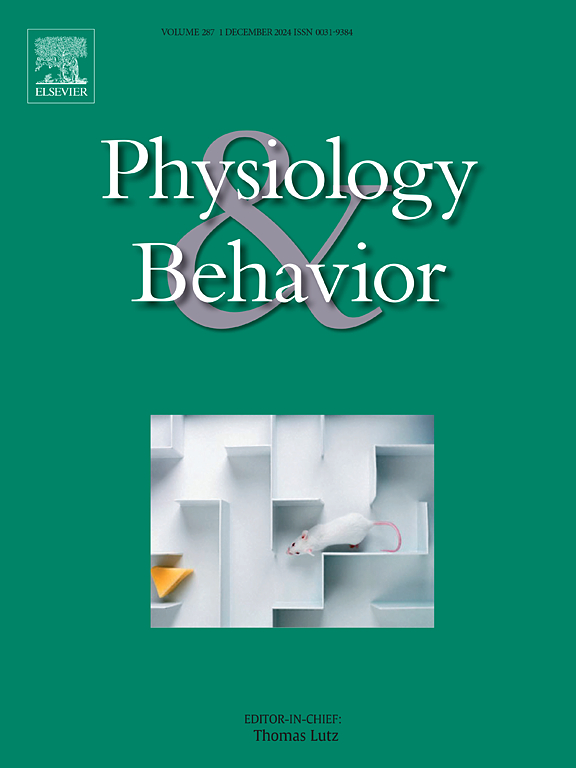GLP-1 receptor agonists significantly impair taste function
IF 2.4
3区 医学
Q2 BEHAVIORAL SCIENCES
引用次数: 0
Abstract
Over 10% of the US population are prescribed glucagon-like peptide-1 receptor agonists (GLP-1 RAs) to combat obesity. Although they decrease cravings for foods, their influence on chemosensory function is unknown. We employed state-of-the-art quantitative taste and smell tests to address this issue. The 53-item Waterless Empirical Taste Test (WETT®) and the 40-item University of Pennsylvania Smell Identification Test (UPSIT®) were completed by 46 persons taking GLP-1 RAs and 46 controls matched on age, sex, smoking behavior, and COVID-19 infection histories. Data were analyzed using analyses of variance. The WETT® scores were significantly diminished in the GLP-1 RA group relative to controls [total means (95% CIs) = 28.61 (25.66,31.56) and 40.63 (38.35,42.91), p < 0.001, η2 = 0.37]. Eighty five percent of the GLP-1 subjects scored worse than their individually matched controls. All 5 WETT® subtest scores were similarly affected (ps < 0.001). Smell function, although slightly decreased on average, was not significantly impacted (p = 0.076). Women outperformed men on all tests. Remarkably, UPSIT® and WETT® scores were higher, i.e., better, in those reporting nausea, diarrhoea, and other GLP-1-related side effects. This study demonstrates, for the first time, that GLP-1 RAs alter the function of a major sensory system, significantly depressing the perception of all five basic taste qualities. The physiologic basis of this effect is unknown but may involve GLP-1 receptors in the brainstem and afferent taste pathways, as well as vagus nerve-related processes.
GLP-1受体激动剂显著损害味觉功能。
超过10%的美国人服用胰高血糖素样肽-1受体激动剂(GLP-1 RAs)来对抗肥胖。虽然它们减少了对食物的渴望,但它们对化学感觉功能的影响尚不清楚。我们采用了最先进的定量味觉和嗅觉测试来解决这个问题。46名服用GLP-1 RAs的受试者和46名年龄、性别、吸烟行为和COVID-19感染史相匹配的对照组完成了53项无水经验味觉测试(WETT®)和40项宾夕法尼亚大学嗅觉识别测试(UPSIT®)。采用方差分析对数据进行分析。与对照组相比,GLP-1 RA组WETT®评分显著降低[总均值(95% ci) = 28.61(25.66,31.56)和40.63 (38.35,42.91),p < 0.001, η2 = 0.37]。85%的GLP-1受试者得分低于他们单独匹配的对照组。所有5个WETT®子测试得分均受到类似影响(ps < 0.001)。嗅觉功能虽然平均略有下降,但没有显著影响(p = 0.076)。女性在所有测试中都优于男性。值得注意的是,在报告恶心、腹泻和其他glp -1相关副作用的患者中,UPSIT®和WETT®评分更高,即更好。这项研究首次证明,GLP-1 RAs改变了一个主要感官系统的功能,显著地抑制了对所有五种基本味觉品质的感知。这种作用的生理基础尚不清楚,但可能涉及脑干和传入味觉通路中的GLP-1受体以及迷走神经相关过程。
本文章由计算机程序翻译,如有差异,请以英文原文为准。
求助全文
约1分钟内获得全文
求助全文
来源期刊

Physiology & Behavior
医学-行为科学
CiteScore
5.70
自引率
3.40%
发文量
274
审稿时长
47 days
期刊介绍:
Physiology & Behavior is aimed at the causal physiological mechanisms of behavior and its modulation by environmental factors. The journal invites original reports in the broad area of behavioral and cognitive neuroscience, in which at least one variable is physiological and the primary emphasis and theoretical context are behavioral. The range of subjects includes behavioral neuroendocrinology, psychoneuroimmunology, learning and memory, ingestion, social behavior, and studies related to the mechanisms of psychopathology. Contemporary reviews and theoretical articles are welcomed and the Editors invite such proposals from interested authors.
 求助内容:
求助内容: 应助结果提醒方式:
应助结果提醒方式:


